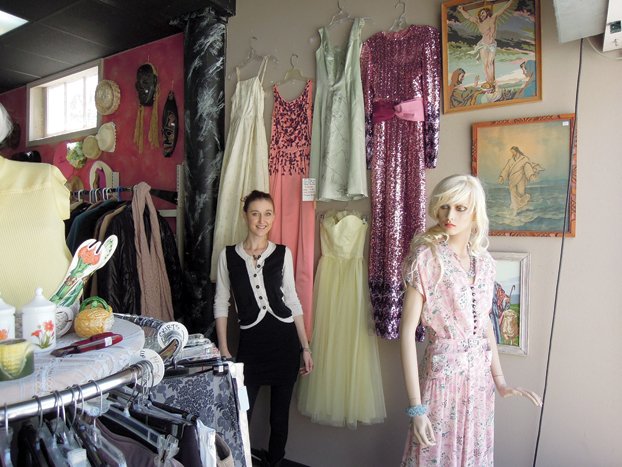Following a “green” lifestyle where fashion is concerned does not have to mean wearing hemp skirts and drinking green smoothies. It can begin with shopping at garage sales or thrift stores. As with most methods of change, converting old habits takes time. But with green living, each decision has a ripple effect.
For decades, the general focus of the corporate world was on mass production at the lowest cost possible rather than ensuring that products are made to last in a low-waste setting. A shift in consciousness is compelling consumers to question where items are made and of what, along with how production impacted the environment.
The purchasing power of each person is a powerful way to influence a way of life. By looking at the label and choosing items made close to home, learning about the ethical methods of a company and finding ways to reuse and repurpose items, the influence of each purchase builds momentum and sends a message.
BEING THRIFTY
Start by visiting resale shops. Thrift stores typically carry a wide range of items, including T-shirts, jeans, shorts, dresses, suits, shoes and belts. Their inventory is increasingly trendy and fashionable, and many offer boutique and name-brand items at a steeply discounted price.
Cheap Thrills owner Harriet Wells said vintage fashion is regaining popularity and that customers are increasingly putting together outfits that define an individual style. As a buyer, she keeps an eye on the trends of higher- end stores, new styles and youth fashion.
“Thrift stores get people to wear good quality, expensive clothing for a cheap price. It’s a way to get name brands at an affordable price,” Wells said. The sales staff is often available to help new shoppers locate distinct styles, and the pressure to buy items is relieved. Customers may also be able to barter by bringing in gently used items. If the store is interested, the trade value is often worth more than the cash value. In the same vein, bringing clothes to nonprofit donation organizations prevents useful items from being dumped in a landfill.
“Clothes can have a really good form of recycle. If it goes to a thrift store and doesn’t sell, they can be cut up into rags [for mechanics] or bailed up and brought to other countries that don’t have as much clothing as the United States,” Wells said.
WALK THE WALK
Eco-fashion is a design philosophy where the cut of fabric is as important as how it was made. In an industry in which last season is obsolete, embracing sustainable practices and philosophies will create a resounding impact. There are as many factors to choosing sustainable clothing as there are to making it. The top criteria includes vegan materials, ethical production, fair-trade practice, organic fibers and recycled materials, as stated by the Eco Fashion World blog.
With a little research, one can learn how to read between the lines in a label. Simpler decisions can be made either by purchasing from local artisans or buying secondhand. As more information is available about the production of materials and the impact these have on the environment, more fashion designers are signing on to accept social responsibility and be forward-thinking.
As one of the world’s largest polluting industries, more than 1,000 fashion leaders gathered at the Copenhagen Fashion Summit in May to discuss ways to be more sustainable. Since such methods are more costly, it was also discussed how to raise interest and awareness in consumers, as reported on copenhagenfashionsummit.com.

